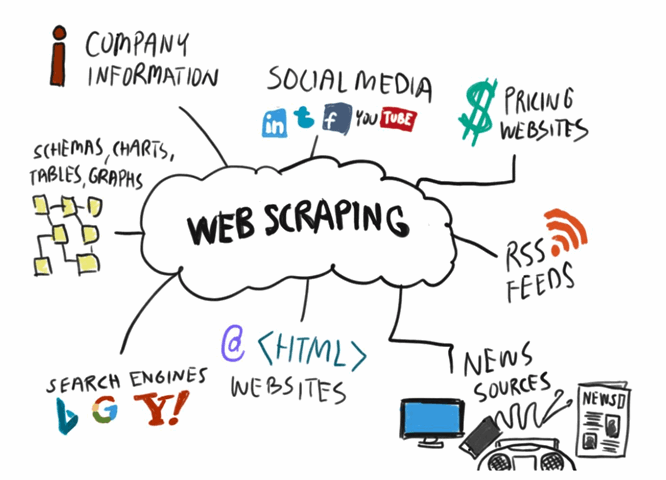In the digital age, data is often referred to as the new oil, and for good reason. The internet is a vast repository of information, and extracting valuable data from websites has become an essential practice for businesses, researchers, and developers alike. This process, known as web scraping, involves automated extraction of data from websites, and it comes in various forms. In this article, we’ll delve into the different types of web scraping projects, techniques and their applications.
1. Static Web Scraping:
Static web scraping is the simplest and most common form of web scraping. It involves fetching and extracting data from web pages that are static and do not rely on JavaScript for rendering content. In this approach, the scraper retrieves the HTML code of a webpage and then parses the desired information using libraries like Beautiful Soup or lxml in Python. Static scraping is ideal for websites with straightforward layouts and where data is readily available in the initial HTML source.
Applications: News aggregation, price comparison, weather data collection.
2. Dynamic Web Scraping:
Unlike static web scraping, dynamic web scraping involves interacting with web pages that rely heavily on JavaScript to load content dynamically. In dynamic scraping, a headless browser (a browser without a graphical user interface) is used to render the webpage and execute JavaScript, allowing the scraper to access data that is generated after the page loads. This technique is essential for scraping websites with content loaded through AJAX requests or user interactions.
Applications: Social media data extraction, real-time stock market data collection, e-commerce price monitoring.
3. Structured Data Scraping:
Structured data scraping involves extracting data that is organized and formatted in a structured manner, often in formats like JSON or XML. Websites that provide APIs (Application Programming Interfaces) for data retrieval are great candidates for structured data scraping. APIs offer a more direct and efficient way to obtain data compared to scraping the HTML content of web pages.
Applications: Integrating external data into applications, fetching financial market data from financial APIs, accessing social media data through official APIs.
4. Unstructured Data Scraping:
Unstructured data scraping involves extracting information from websites that present data in a more unorganized and free-form manner, such as news articles, blog posts, or reviews. Natural Language Processing (NLP) techniques are often applied to parse and extract relevant information from this type of data. Sentiment analysis and named entity recognition are common tasks in unstructured data scraping.
Applications: Sentiment analysis of customer reviews, extracting insights from news articles, monitoring online public opinion.
5. Image and Media Scraping:
Web scraping is not limited to text-based data; it can also be used to extract images, videos, and other media content from websites. Image scraping involves downloading images from websites, while media scraping can include extracting video URLs or audio files.
Applications: Building image datasets for machine learning, collecting stock images, curating multimedia content for a media-related project.
6. Social Media Scraping:
Social media platforms are goldmines of user-generated content and insights. Social media scraping involves extracting data from platforms like Twitter, Facebook, Instagram, and LinkedIn. APIs provided by these platforms are often used, but there are also challenges due to rate limits and privacy concerns.
Applications: Analyzing user sentiments on social media, tracking trends, monitoring brand mentions.
7. Web Scraping Ethics and Legal Considerations:
While web scraping offers numerous benefits, it also raises ethical and legal concerns. Scraping a website without permission can violate its terms of service and potentially infringe on copyright and data protection laws. It’s important to review a website’s “robots.txt” file to understand what data can be scraped and to respect the website owner’s guidelines.
In conclusion, web scraping is a versatile technique that comes in various forms, each catering to specific data extraction needs. Whether it’s static or dynamic, structured or unstructured data, web scraping has revolutionized the way we access and utilize information from the web. However, responsible and ethical scraping practices are crucial to ensure a harmonious online ecosystem and avoid legal issues.

